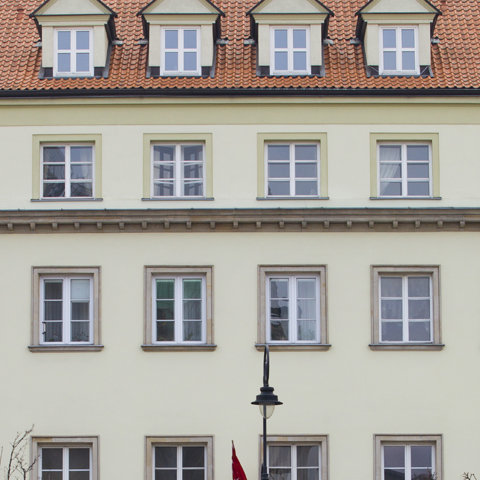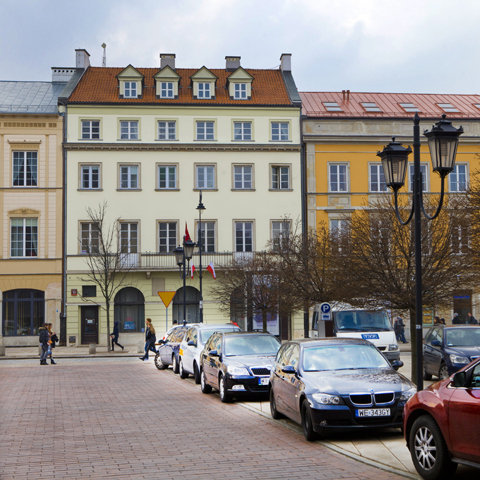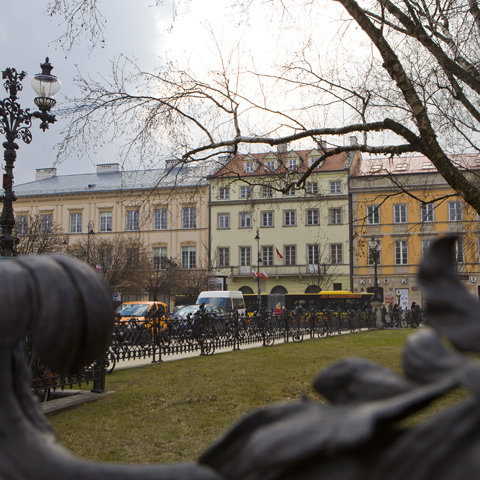Composers / Fryderyk Chopin / Places catalog
Wojciech Żywny’s apartment
In the preface to the posthumous works of Fryderyk Chopin, published in Paris in 1855, Julian Fontana, his secretary, associate and friend for many years, wrote: ‘Żywny was the only piano teacher Chopin had, and it was he who taught him the first principles of playing. The child’s progress was so prodigious that once he turned 12, his parents and teacher thought it best to leave him to his own devices and let him follow his own path, rather than trying to guide him’.
Wojciech Żywny, born in Bohemia in the middle of the eighteenth century, was assigned the special role of teaching this genius. Chopin did not owe the blossoming of his extraordinary talent to Żywny’s tuition, but he undoubtedly owed him the rudiments of piano playing, one of the first contacts he had with this instrument he loved so much, and most likely also his partiality to the Baroque and Classical works of Johann Sebastian Bach and Wolfgang Amadeus Mozart.
Żywny was a very distinctive figure, and some of his features have come down to us through the profiles penned by his pupils. We know through Eugeniusz Skrodzki that ‘his [Żywny’s] nose was huge and had earlier been “bejewelled” in violet as a result of an inordinate fondness for snuff and the beverage of Gambrinus [beer]. Żywny took snuff so fervently, that his nose, beard, white tie, vest and the lapels of his snuff-colour coat – everything was besmeared with snuff. It covered him down to his Hungarian shoes, with which, like his coat, the maestro never parted summer or winter, and often even the piano keyboard’.
‘[…] tall, with a huge nose’, affirmed Eustachy Marylski, a boarder at the Chopins, ‘he wore a yellow wig on his head, which amused us. […] We saw him dressed in ancient velvet waistcoats of various colour. He told us that he had purchased a few pairs of “harem pants”, as he called them, at auction after King Stanislaus Augustus and had those waistcoats made from them’.
For Chopin, his teacher was a very important person in his life. The young composer did not just compose the Polonaise in A flat major (1821) for him, but also mentioned him with gratitude in later years, as we read in a letter he wrote to his family in 1829: ‘No one here wishes to take me for a pupil. Blahetka said that he is surprised by nothing so much as by how I learned this in Warsaw. I replied that with Messrs Żywny and Elsner even the greatest jackass would learn’.
Wojciech Żywny was a close friend of the entire Chopin family. He died in his apartment on Krakowskie Przedmieście in the presence of Ludwika Jędrzejewicz, née Chopin. Ludwika’s descendants subsequently kept a portrait of Żywny painted by Ambroży Mieroszewski for many decades, until it was lost in 1939.
-

Krakowskie Przedmieście 19. Place where lived Wojciech Żywny. Phot. Waldemra Kielichowski.
-

Krakowskie Przedmieście 19. Place where lived Wojciech Żywny. Phot. Waldemra Kielichowski.
-

Krakowskie Przedmieście 19. Place where lived Wojciech Żywny. Phot. Waldemra Kielichowski.